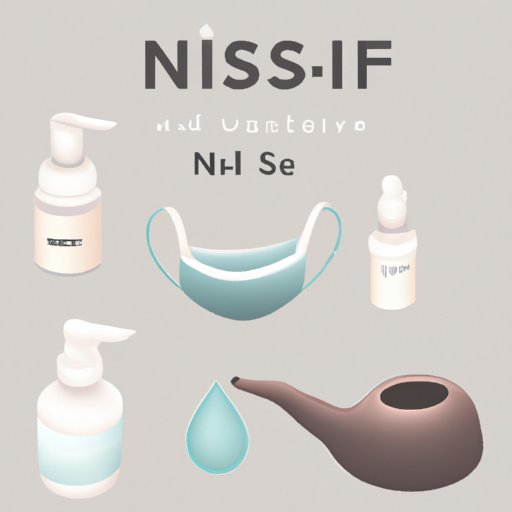Introduction:
The problem of nasal congestion affects millions of people worldwide, particularly during the winter months when the air is cold and dry. It occurs when the nasal passages become inflamed, causing a blockage and making it difficult to breathe comfortably. Not only does this problem make it hard to breathe, but it can also result in headaches, sore throat, and general discomfort. Finding quick relief is essential to improve your quality of life. This article will cover nine effective techniques for unclogging your nose instantly.
Saline Nasal Rinse:
A saline nasal rinse is a saltwater solution that flushes mucus and other debris from the nasal passages. It is an easy and effective method for reducing inflammation and relieving nasal congestion. To create a saline solution, mix a teaspoon of salt and a teaspoon of baking soda in 500 ml of warm water.
To use, tilt your head to one side and pour the saline solution into the upper nostril, allowing it to drain out of the other nostril. Repeat the process on the other side. Blow your nose gently to remove any remaining mucus and solution.
Inhaling Steam:
Inhaling steam is one of the most effective methods for breaking up mucus and reducing inflammation. When you breathe in the steam, it moistens and thins the mucus in your nostrils, making it easier to expel.
To inhale steam, boil water and place it in a large bowl. Drape a towel over your head and lean over the bowl, being careful not to get too close to the water. Breathe deeply for ten minutes. Repeat three to four times per day for quick relief.
It’s essential to proceed with caution when inhaling steam, particularly if you have asthma or other respiratory problems. Make sure the water is not too hot and keep your face at a comfortable distance from the water.
Warm Compress on Sinuses:
A warm compress is an excellent way to relieve nasal congestion quickly and naturally. It works by decreasing the inflammation in your nasal passages, allowing them to open up.
To use, soak a washcloth in hot water, wring it out, and place it over your forehead, cheeks, and nose for 3-5 minutes. Repeat as necessary until congestion improves.
It’s important to note that a warm compress should be used when congestion is caused by allergies or a cold. If you have a sinus infection, a warm compress can make it worse.
Using a Neti Pot:
A neti pot is a device used to flush out mucus and other debris from the sinuses. It is a safe and effective alternative to nasal sprays and decongestant products.
To use, fill the neti pot with saline solution, tilt your head to one side, and pour the saline solution into the upper nostril. The solution will flow through the sinus passages and out of the other nostril. Repeat on the other side and blow your nose gently.
It’s crucial to use distilled or sterile water when preparing the saline solution to avoid the risk of infection.
Stay Hydrated:
Drinking fluids is a simple yet effective way to reduce nasal congestion. When you stay hydrated, it keeps the mucus in your nasal passages thin, making it easier to expel.
Water is the best option for staying hydrated, but there are other options as well, such as herbal tea, broth, hot beverages, and clear soups. Experts recommend drinking at least eight glasses of fluid a day to reduce nasal congestion.
Nasal Sprays or Decongestant Products:
Nasal sprays or decongestant products are useful when you need quick relief from nasal congestion. They contain ingredients that constrict the blood vessels in the nasal passages, reducing inflammation and clearing up congestion.
Nasal sprays can be useful, but they should be used for a maximum of three days due to the risk of rebound congestion. Decongestant products, on the other hand, can be taken for longer periods but should be avoided if you have high blood pressure, heart problems, or are pregnant.
Essential Oils:
Essential oils can be a powerful tool for reducing nasal congestion. They contain antimicrobial and anti-inflammatory properties that can help clear up congestion and reduce inflammation.
The best essential oils for nasal congestion are peppermint, eucalyptus, tea tree, lavender, and rosemary. You can use them in several ways, including adding a few drops to a bowl of hot water and inhaling the steam, applying diluted oil to your forehead or temples, or adding a few drops to a diffuser and breathing in the mist.
Conclusion:
There are many natural remedies for relieving nasal congestion, and the above techniques are some of the most effective. This article has covered saline nasal rinses, inhaling steam, warm compresses, using a neti pot, staying hydrated, using nasal sprays or decongestant products, and essential oils.
If you have a severe or persistent case of nasal congestion, it is essential to seek medical attention. In all other cases, the above techniques should offer quick relief from the discomfort of a stuffy nose.
